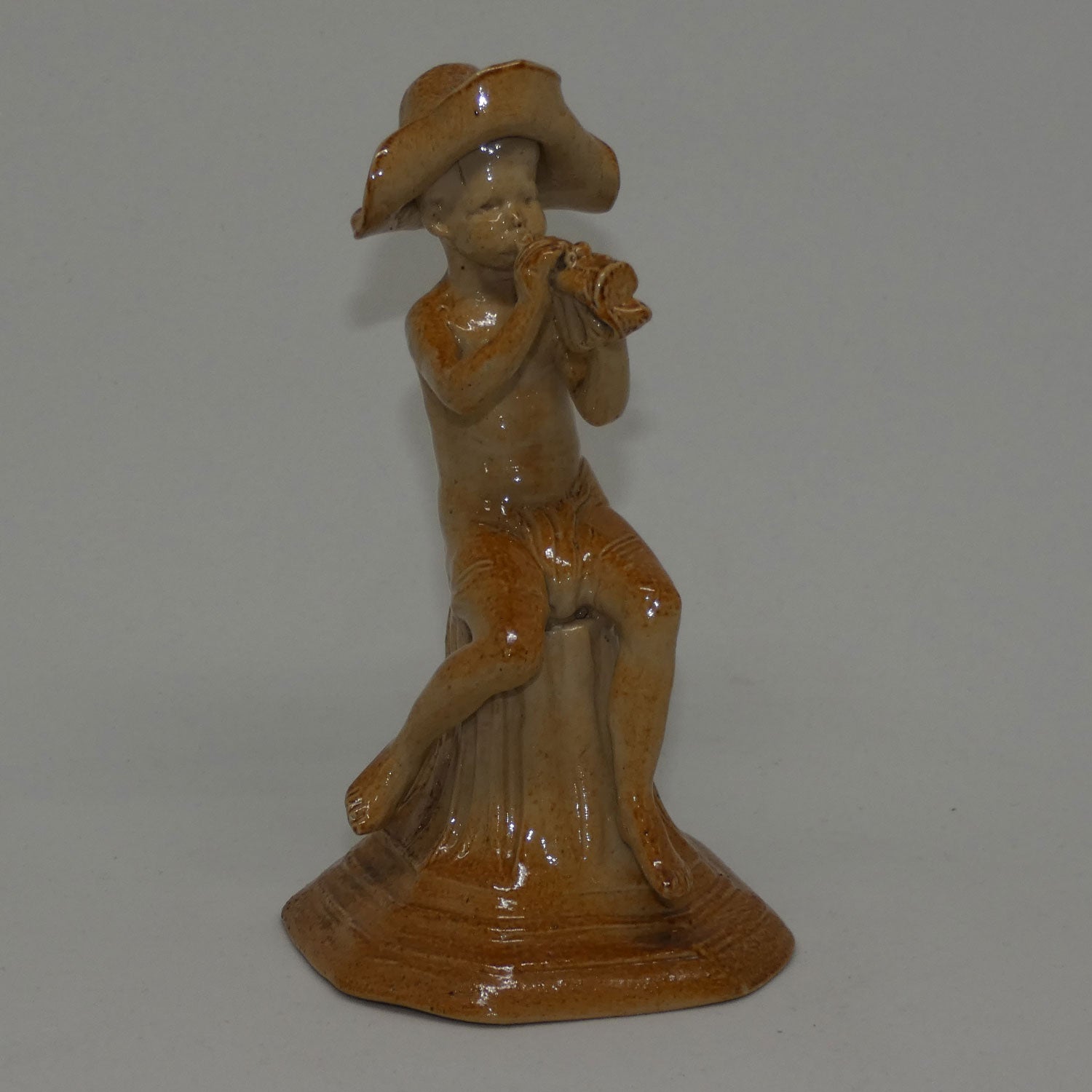George Tinworth: the Premier Artist for Royal Doulton

Tinworth was born in Walworth, a London district adjoining Lambeth. He was the son of a wheelwright, and was expected to follow in his father's footsteps - but young George had other ideas.
As a child, Tinworth became fascinated by "living statues" that displayed at various fairs. He would peep through gaps in the tents to see them, and when he returned home, would practice being one in front of a mirror. He also took to wood carving, using pieces of offcut sourced from his father's job as a wheelwright, but the carving (and his developing talent) had to be hidden. His talent was noticed by a neighbour, who suggested he would benefit from studying anatomy at Art School.
As a 19 year old in 1861, Tinworth pawned his overcoat to pay for evening classes at the Lambeth School of Art to study pottery (where he was a fellow student of Robert Wallace Martin - later of the of the Martin Brothers pottery). His study was he and his mother's secret, kept from his father for many months, until has father demanded to know where he was. John Sparkes, the head of the Lambeth School of Art recognized his extraordinary talent and when he was 21, Tinworth won a scholarship to the Royal Academy School. Tinworth (as we now know) was a gifted student but still had to earn a living. He worked at mending cartwheels, and at a fireworks factory.
Tinworth's father died in 1866, and it was George's responsibility to provide for his mother (now widowed) and himself. It was then that John Sparkes suggested to his colleague, Henry Doulton, that he should employ Tinworth as a pottery decorator.
And so, the Tinworth story began. While he went to become a premier Doulton designer of vases (notably the "History of England" vase), humorous animal (mice and frogs were favourites) and human figurines (pictured) - his "start" was in making cases for water filters - but was transferred to making a new range of saltglaze stoneware, for which Doulton was renowned. Tinworth rapidly made a name for himself and in 1867, approximately 30 examples of is work were displayed at the Paris exhibition.
In September 1913, George Tinworth passed at almost 70 (and still working). For almost 50 years George Tinworth worked at Doulton, producing a huge variety of articles - ranging from monumental panels, many showing his deep religious sentiment - to humourous mice in Brighton and Merry Musicians - where his personality shines through.
He considered that a relief plaque entitled "Preparing for the Crufixion" was his finest work and was resplendent in figures, bold and dramatic.
It was Tinworth who first made the name Doulton world famous, as Sir Henry Doulton widely acknowledged, and the two names Tinworth and Doulton have ever since the 1870s been associated in the minds of collectors and students of 19th century pottery.
George Tinworth's name lives on, not only in the many examples of his pottery work - but in Tinworth Street, Lambeth (so named in his honour).
If you want to read more about George Tinworth - we suggest The Doulton Lambeth Wares (Eyles and Irvine)
